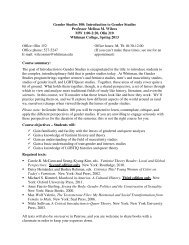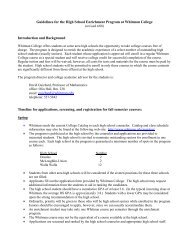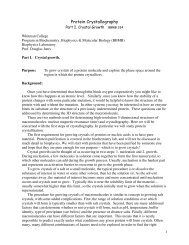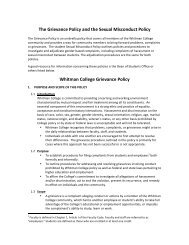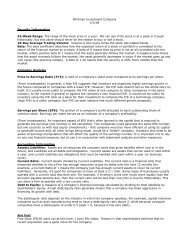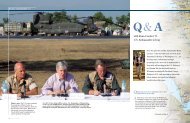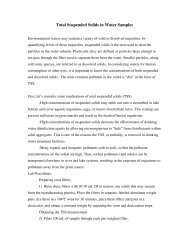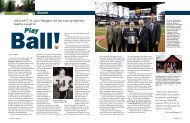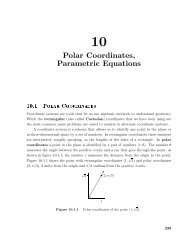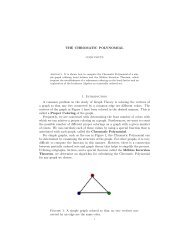Sequences and Series
Sequences and Series
Sequences and Series
Create successful ePaper yourself
Turn your PDF publications into a flip-book with our unique Google optimized e-Paper software.
268 Chapter 11 <strong>Sequences</strong> <strong>and</strong> <strong>Series</strong>Therectanglesthistimeareabovethecurve, thatis,eachrectanglecompletelycontainsthe corresponding area under the curve. This means thats n = 1 1 + 1 2 + 1 3 +···+ 1 n > ∫ n+111∣ ∣∣x dx = lnx n+1= ln(n+1).1As n gets bigger, ln(n+1) goes to infinity, so the sequence of partial sums s n must alsogo to infinity, so the harmonic series diverges.The important fact that clinches this example is thatwhich we can rewrite as∫ n+11lim dx = ∞,n→∞1 x∫ ∞11dx = ∞.xSo these two examples taken together indicate that we can prove that a series convergesor prove that it diverges with a single calculation of an improper integral. This is knownas the integral test, which we state as a theorem.THEOREM 11.23 Suppose that f(x) > 0 <strong>and</strong> is decreasing on the infinite interval∞∑[k,∞) (for some k ≥ 1) <strong>and</strong> that a n = f(n). Then the series a n converges if <strong>and</strong> onlyif the improper integral∫ ∞1f(x)dx converges.The two examples we have seen are called p-series; a p-series is any series of the form∑1/n p . If p ≤ 0, limn→∞ 1/np ≠ 0, so the series diverges. For positive values of p we c<strong>and</strong>etermine precisely which series converge.THEOREM 11.24 A p-series with p > 0 converges if <strong>and</strong> only if p > 1.Proof. We use the integral test; we have already done p = 1, so assume that p ≠ 1.n=1∫ ∞11dx = limxp D→∞x 1−p1−p∣D1D 1−p= limD→∞ 1−p − 11−p .If p > 1 then 1−p < 0 <strong>and</strong> limD→∞ D1−p = 0, so the integral converges. If 0 < p < 1 then1−p > 0 <strong>and</strong> limD→∞ D1−p = ∞, so the integral diverges.



